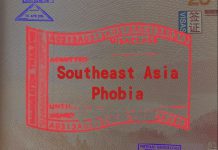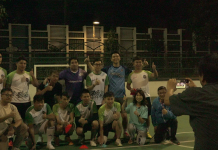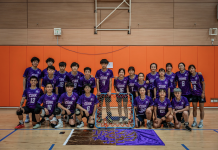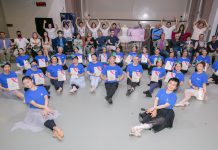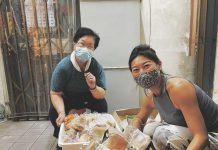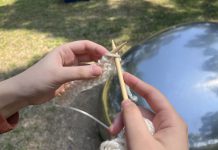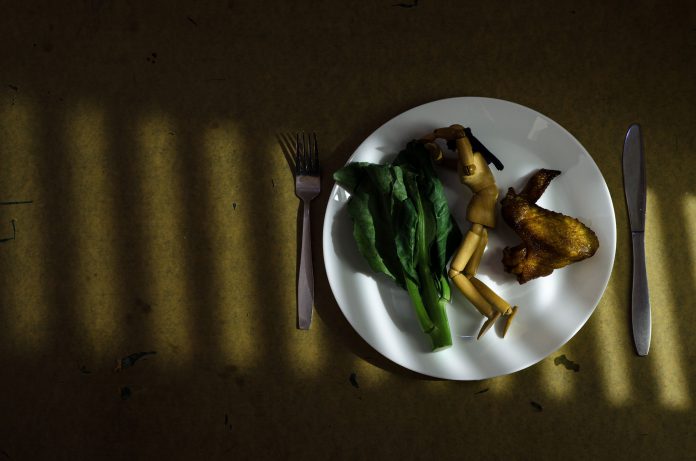Former juvenile offenders speak out against physical abuse by prison guards
By Angela Siu & Kristy Tong
For most people, “chicken wing” and “Chinese kale” are food items. But for Paul Fu Hon-chin and Berry Lam Kai-shing, these terms have more sinister connotations. For these two 28-year-olds and other young men who have been juveniles in detention, they refer to common techniques of physical abuse by prison guards.
In Hong Kong, a juvenile prisoner is a young offender aged between 14 and 21. In the vocabulary of juvenile offenders, “chicken wing” refers to being beaten on the back heavily with an elbow while in a bowing position. Sometimes, inmates are kicked or kneed in the sensitive spots of the thigh, resulting in temporary numbness – this is referred to as “Chinese kale” or gai lan in Cantonese.
Paul Fu says he witnessed and experienced physical abuse as a juvenile offender during his three months in Lai Chi Rehabilitation Centre for drug possession in 2005 and one month in Pik Uk Correctional Institution in 2007 also for possession. He was then detained again for five months in a drug addiction treatment centre after being convicted of the same offence in 2009.
These penal institutions are all run by the Correctional Services Department (CSD). The CSD assigns young offenders to correctional institutions according to their age, gender and security ratings based on the severity of their offence. Young offenders aged from 14 to 20 may be admitted to a training centre or a rehabilitation centre, while offenders with drug addiction problems may be placed in a drug addiction treatment centre.

Today, Fu is a social worker and an active member of the Juvenile Prisoners Human Rights Concern Group (JPHRCG), which is working to highlight and end the abuse of juvenile prisoners.
After more than a decade, Fu can still vividly recall his first day in Lai Chi, when he was slapped about and sworn at by an officer because he forgot the name of the rehabilitation centre when asked. His vision was blurred for a few minutes and all he could hear was ringing in his ears.
“You know this is a horrible place like hell, where you might be slapped ruthlessly any time,” Fu says. “I would rather die than stay there,” he adds.
Besides physical violence, Fu says juvenile prisoners are mistreated in many other ways, such as being forced to eat faeces and lick urine, being barred from going to the toilet, or given only 15 to 30 seconds for a shower, even when their bodies are still covered in soap.
He says the life of a juvenile prisoner is “like [that of] a dog”, adding that “during the process [of imprisonment] things like your dignity are slowly shattered.”
Berry Lam Kai-shing, another former juvenile prisoner and member of the concern group, was still emotionally troubled after his release. He would wake with a start and the first feeling that came to him was the terror of being beaten. He also dreamt of being beaten from time to time.
Lam was imprisoned in Pik Uk in 2008 for six months for drug trafficking when he was around 20 years old. When he turned 21, he was transferred to Tong Fok Correctional Institution, which is a prison for male adult prisoners. He says the treatment of adult prisoners is totally different from that of juvenile prisoners. Officers in juvenile prisons tend to use tougher, more violent and humiliating measures to treat the prisoners.

Although they may live with long-term scars, Lam says very few juvenile prisoners dare to speak up during or after imprisonment. He says silence has become a culture among young offenders because they think it is useless to complain. Lam has seen complainants who were called into an officer’s room to “have a talk” coming out denying the claims they had made. He suspects those complainants were either beaten or threatened. He also dismisses the possibility of seeking help from relatives during family visits because the conversations are recorded.
In a written reply, the CSD says it adopts a “zero-tolerance” attitude towards the misconduct of staff. The department says inmates can lodge complaints through both internal and external channels. Currently, one of the main channels for juvenile prisoners to make complaints is to send a complaint form to the Office of the Ombudsman through the letterboxes in the prisons.
However, Lam says this rarely ever happens because inmates need to get the form from CSD staff, and few would dare do so. Inmates can also complain to the Complaints Investigation Unit (CIU), an internal unit of the CSD set up to handle and investigate allegations against prison staff. They can do this by raising their hands when senior CSD officials visit the facility and lodging a complaint, again in view of others. According to the 2016 Annual Review published by the CSD, only three out of the 314 complaints investigated by the CIU in the past three years were substantiated.
Jordi Tsang Sing-cheung, convenor of JPHRCG, says it is hard for juvenile prisoners to lodge a successful complaint about the misconduct of CSD officers partly because of the absence of calendars and clocks in the correctional facilities. This means prisoners are unable to provide a time and date for alleged abuses. The lack of CCTV in the spots where abuse takes place also makes it difficult to gather evidence.
When a complaint is made to the CIU, it will carry out an investigation and submit a report to the Correctional Services Department Complaints Committee which will examine and endorse the investigation findings. However, Tsang says the independence of the process is questionable because both units are under the CSD. “[The complaint mechanism] seems clearly explained but it is in fact a peer investigation,” he says.
If complainants are dissatisfied with the investigation result, they can appeal to the Correctional Services Department Complaints Appeal Board. This board comprises 10 Justices of the Peace (JPs) but the identities of the 10 are not disclosed.
Another disincentive for juvenile inmates to complain is the fear of extended sentences. Unlike adult prisoners, juveniles do not have an exact term of imprisonment when they are admitted. Instead, they may be imprisoned for a flexible period of time, determined by the Commissioner of Correctional Services taking into account their progress and conduct. The period of imprisonment varies in different penal institutions. For instance, it ranges from two to five months in rehabilitation centres, and from six months to three years in training centres.
Social worker and JPHRCG member Rebecca Lam Waimen says young offenders are usually afraid that officers may give them poor reviews and increase their term of imprisonment.
“There is no standard set on [juvenile prisoners’] performance and when they can be released. So it depends very much on the officer’s impression on you, whether he likes you and thinks you are cooperative,” says Lam.
Even after they are released, ex-offenders may be subject to a supervision order for one to three years, during which their performance and progress will be monitored by a CSD welfare officer. The supervisee may be recalled to detention if the welfare officer deems it necessary. This discourages juvenile prisoners from speaking out even after release.
Juvenile inmates can also complain externally to JPs. Under the Justice of the Peace Ordinance in Hong Kong, one function of a JP is to visit any custodial institution or detained person. Each JP who is not a government official conducts on average one visit a year, while each Official JP conducts three to four visits a year. During these visits, JPs have to listen to and handle inmates’ complaints.
However, according to the annual reports on JP visits published by the Chief Secretary for Administration’s Office, none of the 1,400 or so complaints received by JPs from 2005 to 2015, were substantiated.
Under the JP visit programme, all JP visits are unannounced. However, former lawmaker Emily Lau Wai-hing, who has been a JP for over 20 years, says the visits are not genuinely “unannounced” because prison officers will be informed in advance of the range of dates during which they may take place.
Lau says not all JPs are familiar with prison affairs or the scope of their duties. She suggests the government should provide training so that JPs can get up to speed on the basics, such as the number of prisoners, and what they should check for during their visit, as well as the complaints received on the last JP visit.
The United Nations Committee report on the “Convention against Torture and Other Cruel, Inhuman or Degrading Treatment or Punishment” published last February, recommended that Hong Kong should establish an independent body to carry out effective unannounced visits by JPs.
However, in a written reply to Varsity, the Chief Secretary for Administration’s Office responded to the UN report by insisting that the JP Visit Programme provides an effective independent channel for monitoring and improving the penal system.
Legislative Councillor Fernando Cheung Chiu-hung says the government should set up an independent third party to review the CSD’s current approach in its treatment of prisoners, especially juveniles. He calls on the administration to reform the CSD based on findings from such a review.
Cheung says this is necessary because the current complaint mechanism is ineffective. He says this is borne out by the fact that there have been no complaints in the last 10 years from the Sha Tsui Correctional Institution. Cheung finds this hard to fathom because the institution adopts an old-fashioned “3S model”. This refers to “Short” (short period of term of imprisonment), “Sharp” (strict discipline) and “Shock” (unforgettable experience), that is supposed to help juvenile prisoners rehabilitate and reintegrate into society.
“The problem they [young offenders] have to face is this outdated, completely inhumane method which the CSD thinks still works, which exploits one’s dignity,” says Cheung.

Tobias Brandner, a prison pastor and associate professor at the Divinity School of the Chinese University of Hong Kong, has been visiting prisons for 20 years. He describes the 3S model as being like a boot camp. He says it is based on the idea of totally breaking something or someone and then rebuilding them, which he considers outdated and ineffective.
Although some people may think prisoners deserve such treatment as their punishment, Brandner disagrees. “Human rights are inalienable. Inalienable means this is something independent of, that is something basic, something intrinsic in you that can under no condition be taken away,” he says. “Human rights are about being equally and fairly treated.”
Law Yuk Kai, director of Hong Kong Human Rights Monitor, says the alleged physical violence used by CSD officers sets a bad example that goes against the rationale of helping the juvenile prisoners to rehabilitate. Law says juvenile prisons have over-emphasised the deterrent effect.
The Chinese for the Correctional Services Department is made up of the characters for ‘punishment’ and ‘education’. But Law says he can only see punishment.
“The CSD claimed to adopt both ‘punishment’ and ‘education’ in its mission, but where has the ‘education’ gone? Who have they educated?” says Law. “A civilized society will not allow people to abuse the right granted by the public to abuse and humiliate others.”
Edited by Fiona Chan




